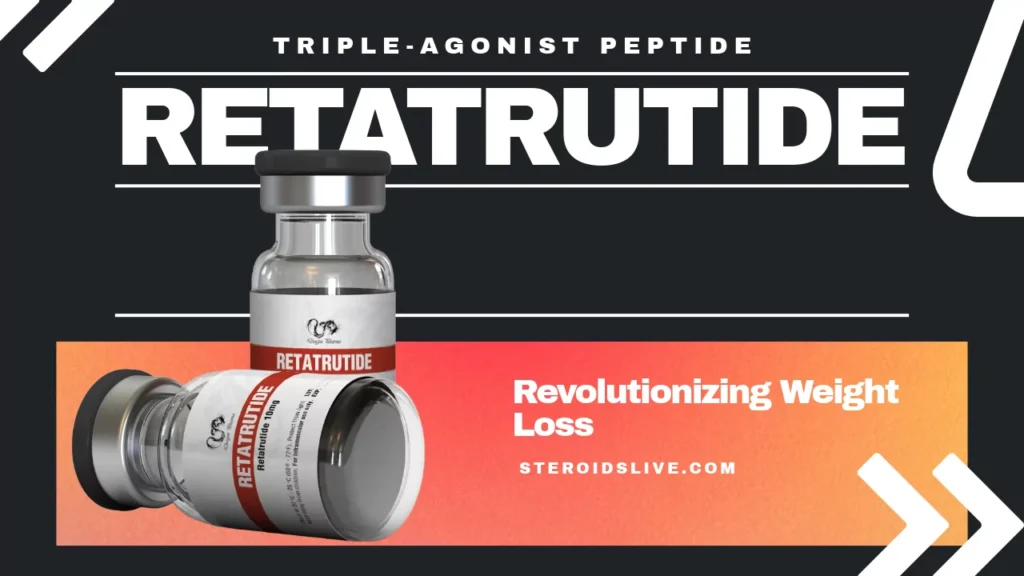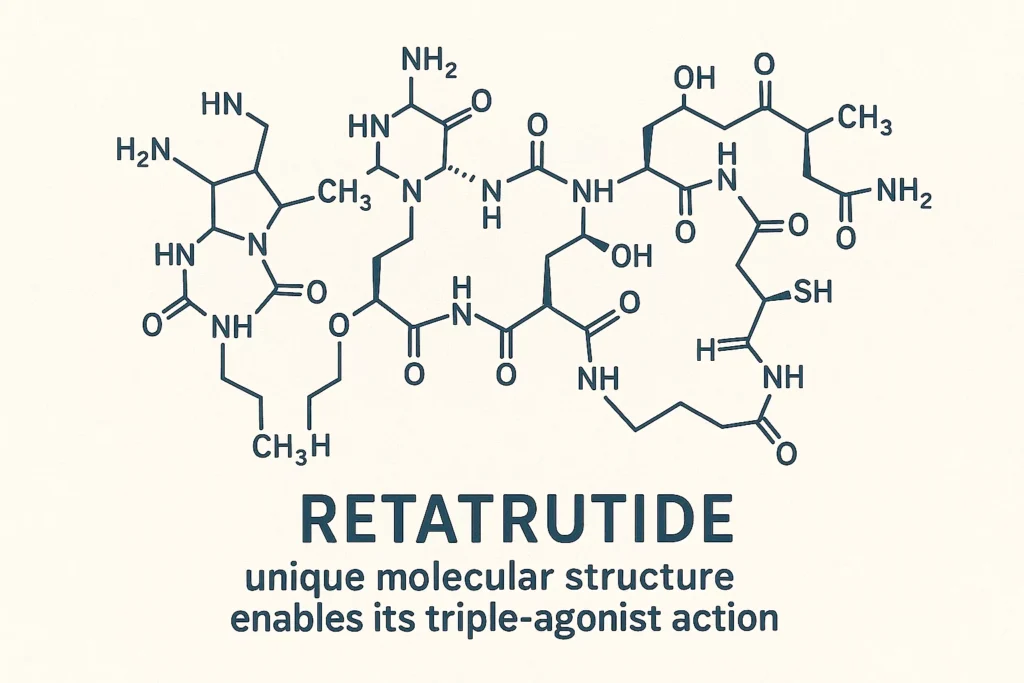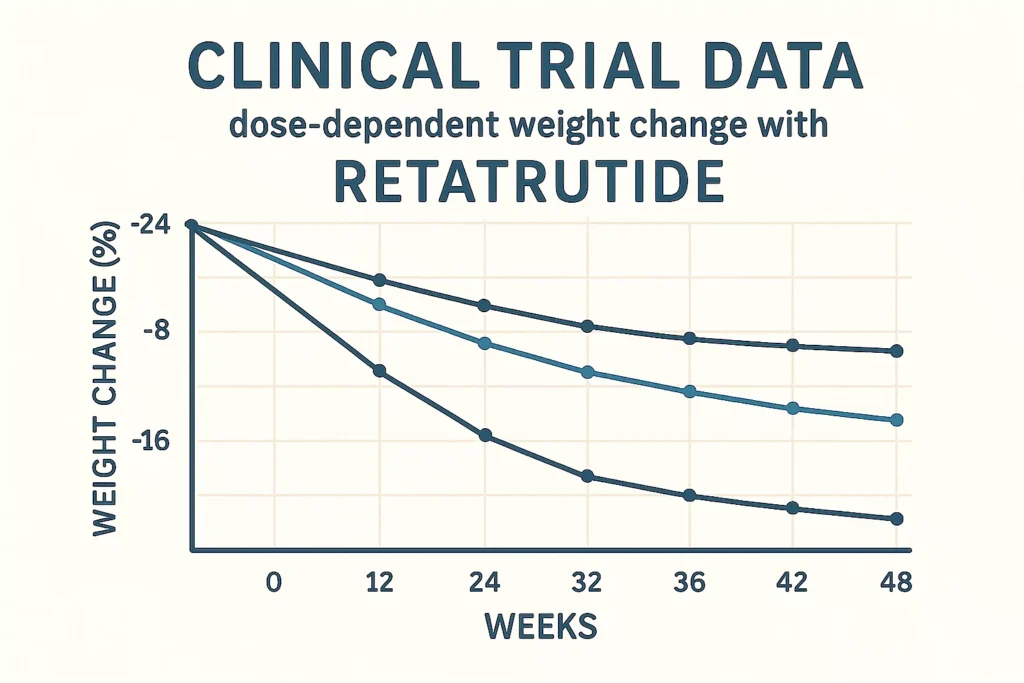For decades, the pursuit of a shredded physique has been a brutal calculus of calories, cardio, and willpower. But what if the next frontier in body composition isn’t in the gym, but in a vial? Enter Retatrutide: a ‘triple-agent’ molecule that doesn’t just help you lose weight—it actively rewires your metabolism for leanness. This isn’t just another appetite suppressant; it’s a potential paradigm shift for anyone chasing single-digit body fat.
The Limits of Willpower: Why “Eat Less, Move More” Fails Elite Physiques
Every serious athlete and bodybuilder knows the struggle: as you push toward single-digit body fat percentages, your body fights back with increasing intensity. This isn’t a lack of discipline—it’s biology.
The human body interprets extreme leanness as a threat to survival. In response, it deploys powerful countermeasures:
- Metabolic Adaptation: Your resting metabolic rate can decrease by up to 15% during prolonged caloric restriction.
- Hormonal Shifts: Leptin (the satiety hormone) plummets while ghrelin (the hunger hormone) surges, creating unbearable cravings.
- Muscle Catabolism: In a severe deficit, your body begins breaking down muscle tissue for energy, undoing months of hard work.
This biological resistance is why getting “stage lean” often requires extreme measures that compromise health and performance. But what if you could bypass these evolutionary safeguards?
The Bodybuilder’s Dilemma
The pursuit of extreme leanness often forces athletes into a vicious cycle of muscle loss and metabolic damage. Traditional approaches create a no-win situation: either accept higher body fat to preserve muscle or achieve leanness at the cost of hard-earned mass.
Beyond Semaglutide and Tirzepatide: The “Triple-Threat” Mechanism Deconstructed
Retatrutide represents the third generation of metabolic peptides, building upon the foundations laid by GLP-1 agonists like semaglutide (Wegovy) and dual agonists like tirzepatide (Mounjaro). But its triple-agonist mechanism takes the science to an entirely new level.
GLP-1 Agonism
The Appetite & Blood Sugar Manager – This mechanism, familiar from drugs like semaglutide, dramatically reduces hunger by slowing gastric emptying and promoting satiety signals in the brain. For athletes, this means effortless caloric deficit without white-knuckle willpower.
GIP Agonism
The Metabolic Amplifier – Glucose-dependent insulinotropic polypeptide enhances insulin sensitivity and improves nutrient partitioning. In practical terms, this means more of the nutrients you consume are directed toward muscle tissue rather than fat stores.
Glucagon Agonism
The Game-Changing Third Engine – This is Retatrutide’s revolutionary component. Glucagon receptor agonism increases energy expenditure by signaling the liver to convert stored fat into energy. It effectively turns up your metabolic furnace while you’re in a calorie deficit.

The Athlete’s Advantage: Retatrutide for Body Recomposition
For fitness enthusiasts and competitive athletes, Retatrutide isn’t just about weight loss—it’s about optimizing the ratio of fat loss to muscle preservation. Early research suggests this triple-agonist approach may offer significant advantages for body recomposition.
The Muscle-Sparing Effect
Unlike traditional weight loss methods that typically cause 20-30% of weight loss to come from lean mass, Retatrutide’s mechanism appears to preferentially target fat stores. The GIP and glucagon components may create an environment that protects muscle tissue even in a significant caloric deficit.
This muscle-sparing property makes Retatrutide particularly valuable during contest preparation or when pursuing an aggressive cutting phase. When combined with adequate protein intake and resistance training, it could enable athletes to achieve unprecedented levels of leanness without the characteristic muscle wasting.
Fueling Performance
The glucagon component provides another potential benefit: by increasing lipid oxidation, it may help spare glycogen during endurance activities. This could theoretically benefit athletes who need to maintain training intensity while in a calorie-reduced state.
Additionally, the appetite-suppressing effects of the GLP-1 component don’t just reduce overall food intake—they specifically diminish cravings for high-calorie, low-nutrient foods. This makes adherence to a strict nutrition plan significantly more manageable.
The “Get Shredded” Protocol
While Retatrutide is still investigational, its potential to revolutionize contest prep is undeniable. Imagine being able to achieve stage-ready conditioning without the extreme carbohydrate and water manipulation that currently defines peak week. The implications for physique sports are profound.
Under the Microscope: Analyzing the Phase 2 Trial Data
The landmark phase 2 trial published in the New England Journal of Medicine revealed why Retatrutide has generated so much excitement in scientific and fitness communities.
| Dosage | Weight Loss (48 weeks) | Key Findings |
|---|---|---|
| 1 mg | 7.2% | Significantly greater than placebo with manageable side effects |
| 4 mg | 12.9% | Progressive improvement in cardiometabolic markers |
| 8 mg | 17.1% | Superior efficacy compared to existing GLP-1 agonists |
| 12 mg | 24.2% | Unprecedented weight loss with favorable body composition changes |
What makes these results particularly remarkable is that participants were not elite athletes following optimized training and nutrition protocols. The “super-responder” potential for disciplined individuals with already high muscle mass could be even more significant.
The Iron Price: Side Effects, Risks, and Practical Realities
Like any powerful metabolic agent, Retatrutide comes with potential side effects that athletes must seriously consider.
The Gastrointestinal Hurdle
The most common side effects are gastrointestinal: nausea, vomiting, diarrhea, and constipation. For the general population, these might be manageable inconveniences. For athletes pushing through high-intensity training sessions, they can be session-ending.
The key is gradual dose titration—starting low and increasing slowly to allow the body to adapt. Some athletes may find they need to time their injections strategically around their most demanding training days.
The Anabolic Dilemma: Protein Prioritization
With significantly suppressed appetite, hitting daily protein targets becomes challenging yet critically important. The standard recommendation of 1.6-2.2g/kg of bodyweight becomes difficult when food intake is dramatically reduced.
Practical solutions include:
- Protein-sparing modified fasts (PSMF)
- Liquid nutrition in the form of protein shakes
- Strategic nutrient timing around training sessions
- Focus on highly palatable, protein-dense foods
Some athletes might find complementary supplements like L-carnitine helpful for supporting fat metabolism during this process.
The Long-Term Unknowns
As an investigational drug, the long-term effects of Retatrutide in healthy, athletic populations remain unknown. While the safety profile appears favorable in obese and diabetic populations, athletes represent a different demographic with unique considerations.
Medical supervision is absolutely essential—this is not a compound to source from underground laboratories or use without proper monitoring.
Beyond Weight Loss: The Recovery Connection
Interestingly, the metabolic optimization provided by Retatrutide might have secondary benefits for recovery. While different from peptides specifically designed for tissue repair like those discussed in our article on Why Athletes Are Turning to Peptides for Injury Recovery, the overall metabolic efficiency could create a more favorable environment for healing and adaptation.
The Future of Fitness Pharma: Ethical and Competitive Considerations
The emergence of compounds like Retatrutide raises important questions about the future of athletic performance and physique enhancement.
The New Arms Race
Will metabolic peptides become the new performance-enhancing drugs for aesthetic sports? The potential is certainly there. Unlike traditional anabolic steroids that primarily build muscle, these compounds offer unprecedented control over body composition.
This represents a shift from simply building mass to precisely sculpting physique—a different paradigm entirely.
The “Fairness” Debate
As with any enhancement technology, questions arise about what constitutes “earned” versus “assisted” achievement. Is a physique built with pharmaceutical help less valid than one achieved through traditional means?
This debate isn’t new, but Retatrutide and similar compounds are making it more relevant to a broader population beyond competitive bodybuilders.
A Tool, Not a Magic Bullet
It’s crucial to recognize that Retatrutide is an enhancer, not a replacement for fundamentals. Without proper training, nutrition, and recovery protocols, its potential remains largely untapped. It works synergistically with lifestyle factors, not independently of them.
Other peptides like AOD 9604 and compounds like cagrilintide offer different mechanisms, while supplements like NAD+ support mitochondrial function through complementary pathways.
Conclusion: The New Frontier
Retatrutide represents a fundamental leap in metabolic science by attacking the weight loss problem from three synergistic angles: appetite (GLP-1), metabolism (GIP), and energy expenditure (Glucagon). For athletes and bodybuilders, this isn’t just another weight loss drug—it’s a potential tool for unprecedented body recomposition.
While still investigational and not without side effects, the triple-agonist approach signals a future where achieving elite-level leanness isn’t just about suffering through the cut, but about strategically optimizing the science of metabolism itself. As research progresses, we’re likely to see even more targeted approaches that further blur the line between pharmaceutical intervention and performance optimization.
For the first time, we have a compound that doesn’t just help you eat less, but actively helps your body prefer to burn fat. The revolution in metabolic manipulation is just beginning.




